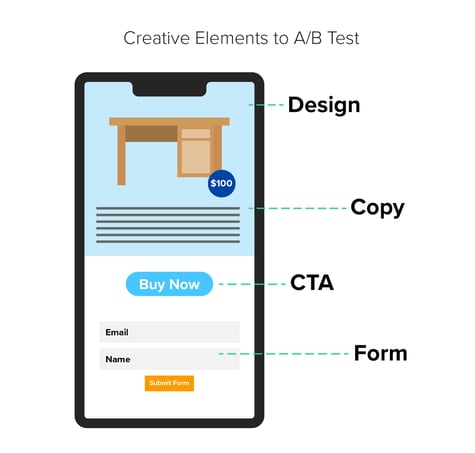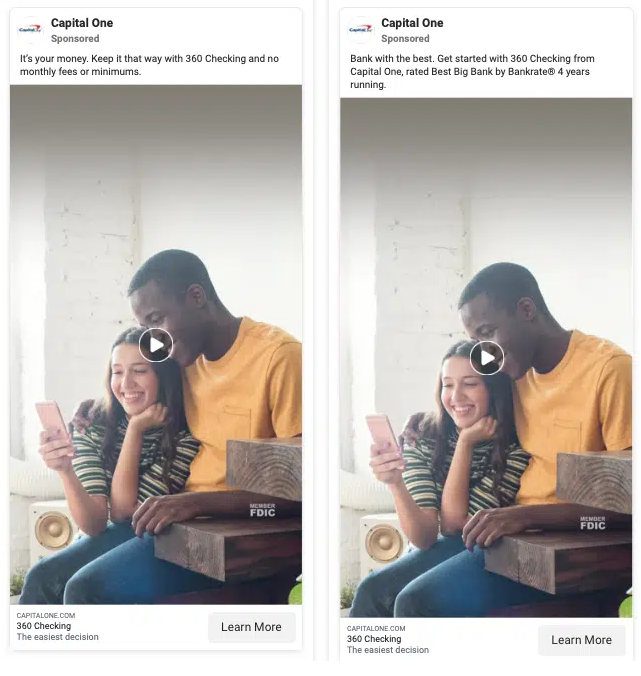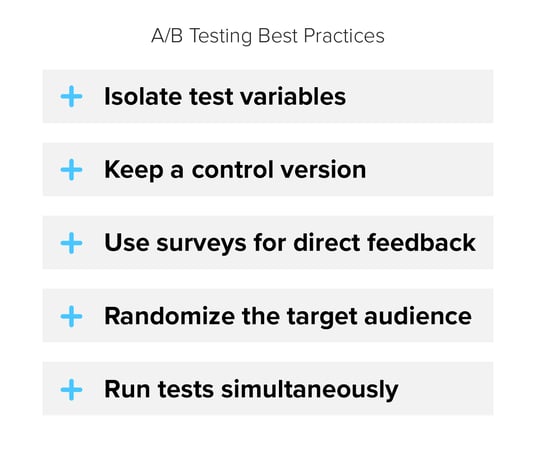A/B Testing Strategies for Impactful Ad Creative


Published on: December 7, 2023
The quest to capture your audience’s attention is never-ending. Thankfully, with the rise of new technology and generative AI, it’s easier than ever to develop engaging creative, but how do you know what will perform well? The tried-and-true method of determining advertising impact is A/B testing. By testing different ad creatives, you can better understand what resonates with your audience to refine your marketing strategy and achieve greater results.
The importance of A/B testing ad creative
Similar to email split testing, A/B testing ad creative is a data-driven strategy that helps determine which kind of ad gets the highest click-through rate. The most common way marketers A/B test ads is by changing the headline or CTA, but there are several variables you can test, especially when it comes to creative elements. The purpose of A/B testing is to determine what strategies drive conversions so that marketers make their ad campaigns more effective and can modify their strategies as needed. It can be tedious, but it’s a data-proven way to find what works, which will minimize lost revenue and resources in the long run.

Creative variables
Images

Colors

Headline copy

Descriptive copy

CTAs

Landing pages and forms

Best Practices
Whether you're experimenting with headlines, images, or call-to-actions, A/B testing remains a powerful tool for optimizing ad creative. However, to ensure accurate results and meaningful improvements, it's crucial to follow certain best practices. First and foremost, it's essential to maintain consistency in branding and personalization. Your ads should always echo your brand's colors, tone, and personality to foster recognition and trust. Furthermore, ads should be targeted and personalized as generalized ads typically see less engagement. In the pursuit of data through A/B testing, don't compromise on personalization by deploying numerous ads, as this can negatively impact your overall ad performance. Instead, start with a personalized, branded ad and gradually alter variables from there. General guidelines to follow when A/B testing are as follows:

Timing
Timing also plays a role when conducting A/B testing. Being aware of peak hours and time zones will help you maximize your visibility. For instance, if you're running a geofencing campaign, you would want to have your ads displayed during operating business hours. Depending on the industry and location of the business, this may vary.
Additionally, it's imperative to let your tests run long enough to gather sufficient data. However, caution must be exercised to prevent them from running too long as this could lead to external factors like seasonal behavior shifts affecting your data. On average, it's recommended that tests run for about 90 days. This is typically an adequate amount of time to collect ample data and yield conclusive results, thereby providing a solid foundation for your A/B testing strategies.
Conclusion
When it comes to navigating crowded ad spaces, A/B testing for ad creatives is a key strategy. By relying on data rather than assumptions, marketers can fine-tune their ads, ensuring better results without increasing expenses. It's the pathway to standing out in the digital marketplace and making a lasting impact.
Explore the latest B2B topics and gain insight to adapt best practices for success and help grow your business.
Anyone producing content today has seen how quickly trust evaporates the moment an educational piece turns into a sales ambush. A guide starts...
MoreIn a world that often underestimates what people with disabilities can achieve, Vibrant Works is flipping the narrative — one job, one product, one...
MoreDo you ever wonder whether your content is actually landing with all levels of your audience — the experts, the newbies, and everyone in between?...
MoreComplete the form below and we’ll get in touch with you right away.
You are now in accessibility mode. To restore settings to default, click the accessibility icon on the right hand side.